2008 BMW R 1200 GS & R 1200 GS Adventure
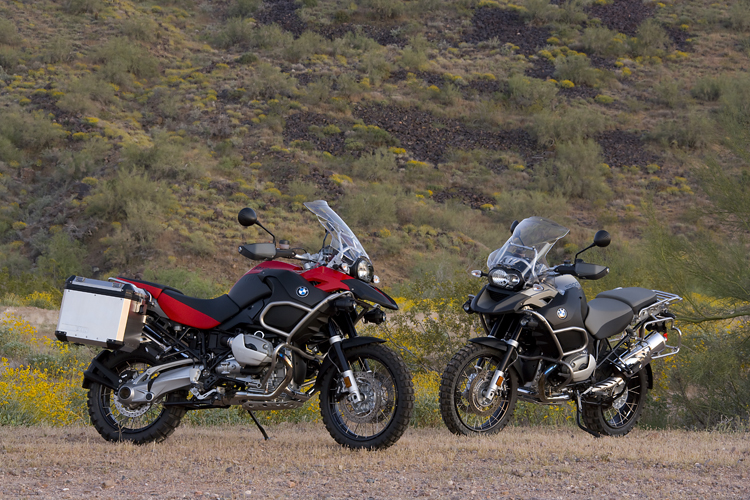
What is it that makes a motorcycle great? Is it all-around ability, or sharply focused functionality in a specific area? For the R 1200 GS series, a hot item for BMW aficionados with over 75,000 of them already sold worldwide, it may be both.
While sales are a good indicator of success, BMW couldn't rest on its laurels forever. To kick off the first major changes since the inaugural 2004 R 1200 GS model, BMW Motorrad USA hosted a press launch in Arizona which provided a mix of on- and off-highway riding to highlight the latest version of this legendary machine's prowess and abilities on a variety of surfaces.
Since its introduction in 1980 as an R 80 G/S, the GS series has grown in displacement, weight, complexity and cost. For 2008 the regular R 1200 GS and the more-expensive Adventure version have undergone numerous updates that should appeal to long-distance riders and globetrotters respectively. While most of the changes for 2008 are internal, the most obvious external updates include new stainless-steel guards near the front of the fuel tank, a slightly redesigned upper front fender, white turn signals and an LED tail light.
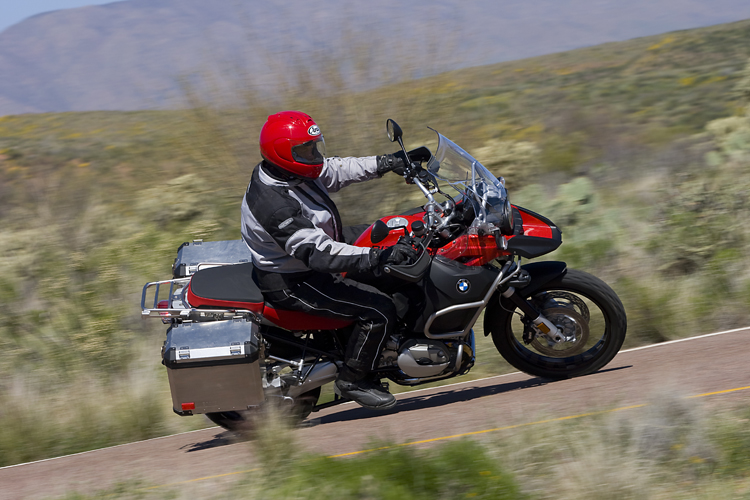
Engine & Transmission
BMW is now installing in the GS the same version of its venerable and proven twin-cylinder, four-valve-per-cylinder Boxer engine that was first introduced in the R 1200 R. Rated power has been increased from the previous GS by five percent, to 105 horsepower at 7,000 rpm and peak torque of 85 ft-lbs is reached at 5,750 rpm. Redline was raised to 8,000 rpm and the engine now has a wider powerband. Alternator output has also been increased from 600 to 720 watts, great for extra lights and heated clothing.
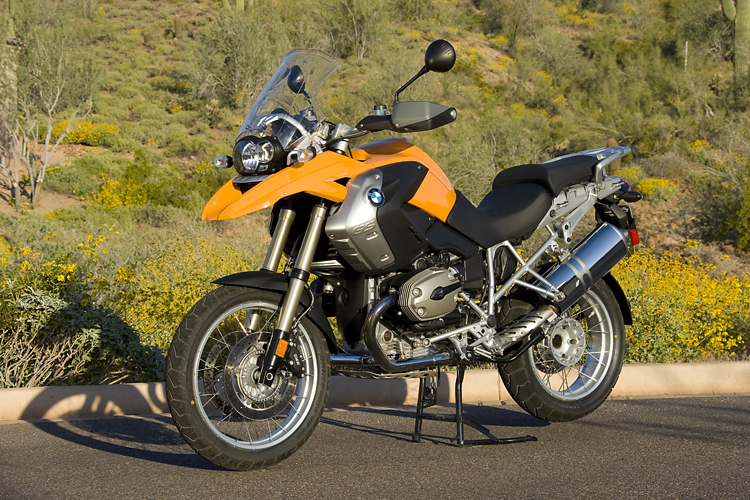
A balance shaft makes the R 1200 smoother than the previous 1100 and 1150 engines and thanks to electronic knock control, the GS can run on regular gasoline in places where only low-octane is available, despite its 12:1 compression. The fuel-injected engine started instantly hot or cold and ran glitch-free the whole time, from near sea level to the high-altitude pine forests of Arizona's mountains. There's a noticeable gain in midrange and top-end pull with no loss apparent on the bottom.
The six-speed transmission was redesigned with increased bearing diameters and beefed cases to improve durability, which was a problem on some first-generation GS models. Final gearing on all GS models is changed from 1:2.82 to 1:2.91 and the Adventure now has a no-cost, shorter first-gear option to make low-speed dirt riding easier. A hydraulically actuated single-plate dry clutch connects engine to gearbox. It worked well but you could smell it burning when it was necessary to slip the clutch in difficult off-road situations. Both GS models also got an improved shift mechanism for more precise gear changes, and the result is the slickest-shifting GS yet.
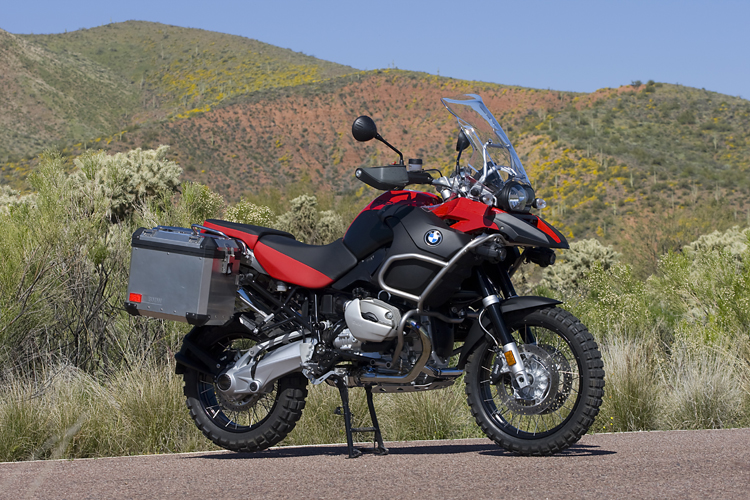
Chassis & Brakes
Current R 1200 GS models are about 66 pounds lighter than the prior R 1150 GS versions, despite a hefty tubular steel frame. BMW's patented Telelever front end and Paralever rear suspension are used and they work well in this application, although rear un-sprung weight is high due to the Cardan shaft drive. The GS Adventure comes with spring travel that is .8 inch longer at both ends for rough roads.
In front, twin brake rotors are clamped by four-piston calipers, while the rear wheel is stopped by a single disc with two-pot caliper. The available ABS is no longer over-boosted and can be switched off for dirt use. Stopping power is excellent and modulation is improved over previous models.

BMW's optional ASC traction control system has three modes (normal, off-road and deactivated) that can be switched from the handlebar. Wheel sensors pick up any difference between wheel speeds and then the computer cuts engine power to prevent wheel spin in conditions such as wet and slippery roads. The off-road setting allows more slip, but will intervene if a major loss of traction occurs. Experienced dirt riders can still drift with it on, and ASC can be shut off for those who really like to slide - or dislike electronic controls.
Tubeless spoked wheels are standard on the Adventure and a $ 495 option on the regular GS, which comes with alloy wheels otherwise. Off-road handling is respectable for such a large machine, but the height and weight of the bike make it a real challenge unless you're tall and strong, very experienced on dirt - or Jimmy Lewis. On-road handling is surprisingly responsive and the GS is fun to ride through the twisties, yet rock stable at high speeds. However, the no-cost optional knobbies on the Adventure model create a considerable amount of vibration, noise and squirming. If you plan to ride on pavement, skip the knobbies, which are a compromise that appear to have more traction on dirt than they actually provide.
ESA
BMW engineers worked hard on a special "Enduro" version of Electronic Suspension Adjustment or "ESA" (which was first introduced on the 2004 K 1200 S) modified for dirt use. This is the first time ESA has been available on the GS and it is even more useful in the dirt than on the road.
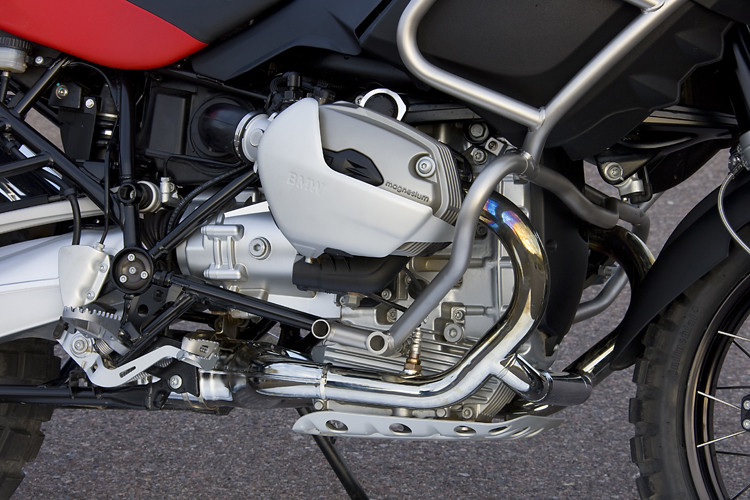
The ESA adjusts both front and rear spring preload and damping, and on the GS, ESA also has on-road and off-road modes. On-road offers "rider only," "rider & luggage" and "pillion use" settings. Each of the preload settings can be combined with three different damping modes: Comfort, Normal and Sport.
ESA has five-stage electronically adjustable preload for both ends. With on-road settings the front spring is at the minimal setting. For off-road use, ESA offers two preload settings that can be combined with any of three suspension modes. The intermediate setting increases the spring preload at both ends to 50 percent for off-road travel where large impacts are likely, and ground clearance is raised by 0.8 in. compared with on-road settings.
Six damping settings are selectable on the fly. In on-road mode, 'Comfort' softens things up; 'Normal' mode is for average conditions; and 'Sport' mode is self-explanatory. In off-road mode there is a 'Soft' mode, a 'Hard' for smooth surfaces and 'Normal' which provides a balance between the two; and the differences between modes are readily felt. If you don't select ESA, the bike is fitted with five-position mechanical front-spring preload adjustment and hydraulic rear-spring preload adjustment, which is still good.

Ergonomics & Accoutrements
The main features that differentiate the '08 R 1200 GS Adventure from this year's standard R 1200 GS are the voluminous 8.7-gallon gas tank, a larger windscreen, engine and valve-cover protectors, heavy-duty luggage rack, color-coordinated seat, hand guards, longer spring travel and spoked wheels. The Adventure also has wide enduro footrests and an adjustable brake pedal and gear shift.
Although the Adventure's windscreen is larger than the regular GS, the angle of the windscreen can be adjusted on both, providing reasonable wind protection at highway speeds. Thicker and stronger aluminum handlebars are used and the handlebar clamps can be rotated 180 degrees for two different positions. The rearward handlebar position is best for riding on road, while the forward position is better for a standing position off-road. Hand guards, available on the R 1200 GS and standard on the GS Adventure, are now attached directly to the handlebars. Heated grips are offered with several option packages. Instrumentation is basically unchanged, although an improved sensor system with an expanded measurement range and improved resolution is used for the fuel display.
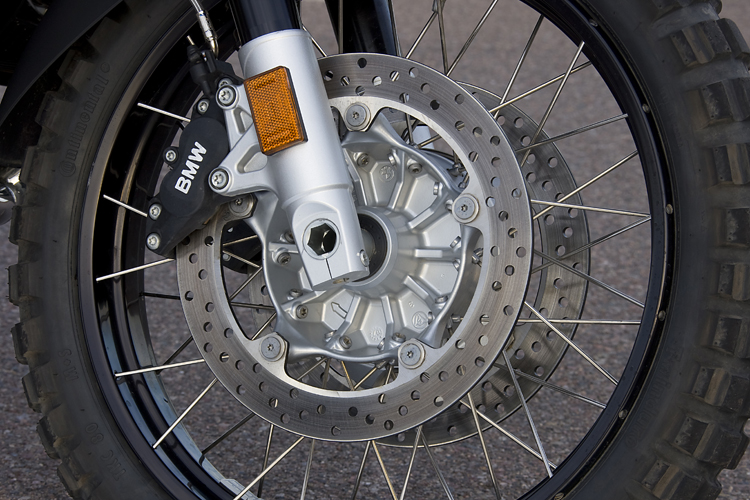
For more comfort, seat foam thickness has been increased in the front area. The standard GS seat is adjustable from 33.7 to 34.5 inches; the optional high seat is 34.6 to 35.4 inches and the no-cost optional low seat height is 32.3 inches. An even lower fixed 31.1-inch seat combines with a low-suspension package, but that option is not offered with ESA. The Adventure seat is adjustable from a tall 35.2 inches to an even taller 36.0 inches.
Test Summary
Those of you who liked the previous GS should like the new one even more, as all the changes seem to make the GS work better. We found the R 1200 GS to be an excellent on-road bike, and with its comfortable riding position and roomy luggage it can take you almost anywhere you want, for a base price beginning at $ 14,600 plus destination charges. Riders who want to venture to more remote places can get there in style - for an additional two grand - on the Adventure. BMW offers a slew of options, which can add considerably to the bottom line. Travelers headed for Deadhorse, Alaska or Timbuktu, Mali will probably want extras like the big aluminum panniers, on-board computer and anti-theft alarm. But no matter what you choose or how you get there, be sure to send us a postcard.
Technical Specs
+ more powerful engine, more electronic options, optional ABS
- expensive, especially with full accessories, too tall for shorter riders
Distributor BMW Motorrad USA
MSRP $ 14,600 base/
Adventure $ 16,600
Engine Boxer twin, OHC four-valve per cylinder
Displacement 1,170cc
Bore x Stroke 101 x 73.0mm
Power 105hp @7,000rpm, 85ft-lbs @5,750rpm
Cooling air/oil cooled
Ignition digital-inductive electronic
Transmission 6-speed
Frame steel tubular backbone type
Front Suspension Telever adj. damping, preload w/opt. ESA, 7.5in travel (Adventure 8.3in)
Rear Suspension Paralever w/single-sided swingarm, adj. damping, preload /opt. ESA 7.9 in travel (Adventure 8.7in)
Rake/Trail 25.7°/101mm
Front Brake twin 305mm discs w/4-piston calipers/single 265mm disc w/2-piston caliper, optional ABS
Front Tire 110/80-R19
Rear Tire 150/70-R17
Claimed Dry Weight GS 447lbs (202.7kg) Adventure 491lbs (222.7kg)
Wheelbase GS 59.3in (1,507mm) Adventure 59.5in (1,511mm)
Seat Height 33.7-34.5in (850-870mm) Adventure 35.2-36in (915-895mm)
Fuel Capacity GS 5.3gal (20l) Adventure 8.7gal (33l)
Fuel Consumption N/A
Colors GS: Titan Silver Metallic, Slate Gray Metallic, Namibia Orange, Tanzanite Blue; Adventure: Magnesium Metallic, Magma Red.




